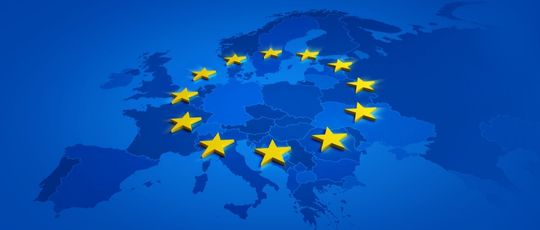A year and a half after the pandemic hit, organizations are still coming to grips with what COVID-19 means for the future of business. While signs show we’re on the road to recovery, the reality is we’re facing another year of challenges — one of the biggest being wage equality.
Now that there’s a heightened awareness of gender and racial inequality in the workplace, organizations can no longer afford not to invest in digital reward systems that provide complete transparency, which is often the biggest business expense. Without it, they won’t have visibility over the impact of cost-cutting measures they’ll need to continue to introduce throughout 2021, especially whether these cuts are disproportionately affecting employees with certain gender and racial profiles.
Despite systems being available in the market that show, in real-time, all forms of rewards at the employee level, 97% of organizations haven’t invested in them.
From the outside, it can seem as though businesses are avoiding investing in new systems because they’re afraid that higher-quality data will expose a significant liability. Or perhaps, they’re concerned regulators, and the community will discover that their public pledge to ramp up diversity and inclusion programs at the height of the Black Lives Matter movement was just empty talk.
Another reason organizations are holding off on adopting new systems could be the fear of potential litigation and reputational damage that can occur when pay inequality is exposed. Google has recently agreed to pay more than $3.8 million, including nearly $2.6 million in back pay, to settle allegations of "systemic" pay and hiring discrimination that disadvantaged women and Asian workers.
The Risk Is Real
Although gender pay equality has been deemed a high priority in the United Kingdom in recent years, indexes paint a different picture. For example, the country was ranked the 21st most equal nation globally in 2019 — six spots down from the previous year. Additionally, the gender pay gap in the UK was 16%, nearly 10% higher than in Norway and Sweden.
While progress has been slow, regulatory and public scrutiny over pay equity is expected to pick up as we navigate the aftermath of the pandemic. The government provided some respite to businesses in 2020 by suspending enforcement of the Gender Pay Gap (GPG) reporting deadlines in light of the pandemic. This year, many will be hoping for the same regulatory relief, but there’s increasing pressure for Remuneration Committees (REMCOs) to fulfil their responsibilities under the 2018 Corporate Code of Governance to hold companies accountable for complying with their own equal pay policies. Even the Financial Reporting Council was disappointed that businesses seemed to be following Goodhart’s law of focusing on the measures rather than addressing the cause and implementing meaningful reforms.
Moving forward, the biggest risk — even more than being exposed for pay inequality or for deteriorating in equal pay achievements — is getting caught for providing wage equality data that misrepresents the truth. As the bar for evidence continues to rise, organizations that want to be seen as fair and inclusive will need to implement a transparent reward system to prove it.
The Key to Avoiding Discrimination
Transparency in pay systems is essential to uncovering and preventing unlawful pay discrimination. The Equalities and Human Rights Commission has warned that complex variable pay policy is less transparent and more vulnerable to pay inequalities principally due to data being held in different locations.
Currently, even organizations that comply with GPG reporting regulations are using manually aggregated datasets. As a result, some elements are underestimated or ignored, such as pensions, benefits and share awards, which are a much higher proportion of senior employees’ total rewards.
Given how difficult it is to manually extract the exact values of total rewards, it’s much better to invest in systems that do it automatically. Today, getting a real-time, accurate view of how your employees are paid can be as simple as buying an add-on for an existing HR system for a relatively small cost.
A digitized total rewards platform mitigates the risk of unlawful pay discrimination by automatically managing and explaining the complexity of global variations in reward policy, regulation, and tax. These reward systems are particularly helpful in providing clarity to employees on their rate of pay, and importantly, how a reward system operates. This, in turn, helps minimize uncertainty or incorrect perceptions of unfairness and subsequently reduces the likelihood of unequal pay claims being made against an organization.
For organizations, getting data-driven insights on wage distribution quickly and easily can also help reduce the risk of hostile third parties publicizing their interpretation of a problem. This is because digitizing total rewards removes interpretation from the process.
Meanwhile, for business managers and remuneration committees, digital reward systems also offer instant comparisons by any factor desired. These platforms can even provide decision-makers with pay gap data when they hire, promote, dispense pay raises, add benefits or anything else that affects rewards.
Achieving Diversity and Equality in the Workplace
Under the new Corporate Governance Code, remuneration committees are responsible for ensuring organizations deliver on their commitments to diversity and equality. However, the only way for them to effectively uphold their responsibility is to have reliable, up-to-date data showing the true state of pay equity in their organizations.
Most organizations have equal pay and equal opportunity policies in place. And, on the surface, it may seem like they’re taking meaningful action to ensure diversity, equality and inclusion. But sceptics are concerned that many organizations treat this as a tick-the-box exercise and hide their biases behind low quality sampled data.
For organizations to make real progress, they need to provide comprehensive data to decision-makers before any decision is made about a job, promotion or pay rise. They should also include a statement holding themselves accountable for implementing positive reforms for underrepresented groups.
This means organizations need access to real-time data on the current state of remuneration on the full spectrum of identities that feed into ‘equal.’ Organizations that dive deep into their data will find it easier to chart progress toward eliminating barriers and achieving true equality.
The excuse that it’s too difficult to provide this data is no longer acceptable when there are systems in the market that easily solve this problem.
Ultimately, compliance with legislation is not the objective. The objective is to become a diverse, equitable and meritocratic organization. When that happens, compliance is a byproduct.







